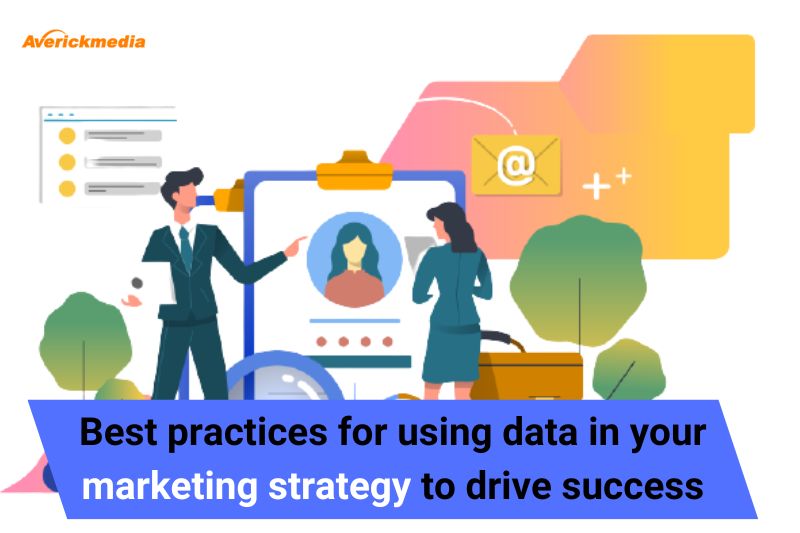How To Market To CIOs
10 Actionable Tips For B2B Tech Marketers

Marketing to CIOs can be a complex and challenging task for B2B tech marketers. As the top decision-makers in the technology purchase process, CIOs are focused on driving innovation and improving operational efficiency, and they rely on trusted advisors to help them make informed decisions. However, with the right approach, you can effectively market your technology solutions to this important audience. In this blog post, we'll provide 10 actionable tips for B2B marketers looking to reach and engage CIOs. By following these tips, you'll be able to create a compelling and effective marketing strategy that will help you connect with CIOs and win their business.
Send a message to our business sales team below
An Overview of the Importance of CIOs in the Technology Purchasing Process
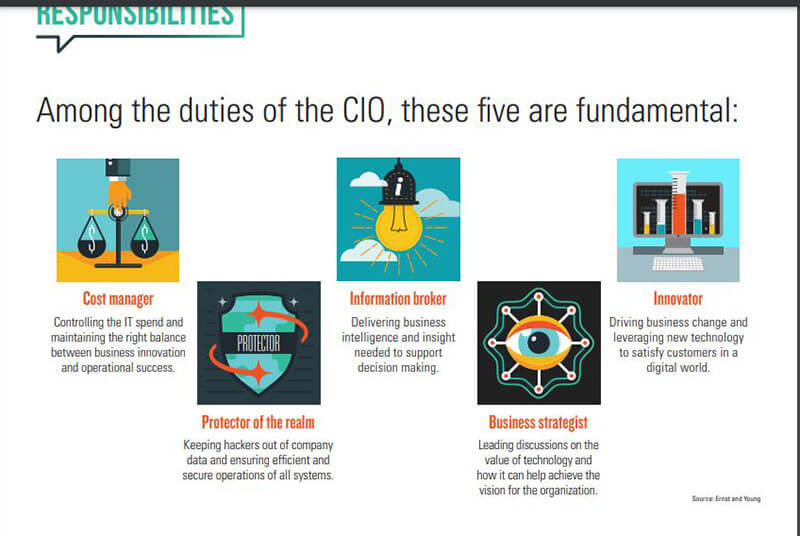
Source: Multiscreensite
The Chief Information Officer (CIO) plays a crucial role in the technology purchasing process as they are responsible for managing the organization's technology and information systems and ensuring that they align with the organization's goals and objectives. As a result, CIOs have a significant influence over technology purchasing decisions. They are the ones who evaluate and select the technology solutions that will be implemented within the organization. This includes assessing the potential benefits, costs, and risks of different solutions and determining how they will integrate with the organization's existing systems and processes. Additionally, CIOs are typically part of the organization's senior leadership team and have access to the budget for technology purchases. They are responsible for ensuring that the organization is getting the most value for its investment in technology; therefore, they take the decision-making process very seriously.
Because of their role in the technology purchasing process and their influence over budget decisions, it's important for technology vendors and marketers to understand the needs and priorities of CIOs in order to effectively market their solutions and increase the chances of a successful sale.
Industry-Specific Email Lists
- Energy and Utilities Email List
- Packaging Industry Mailing List
- Media Industry Email List
- Electric Utilities Contact List
- Electronics Industry Email Contacts
- Private School Email List
- Asset Management Mailingl List
- Mining Industry Email List
- Chemical Industry Contact Database
- Transportation Industry Email List
- Accounting Mailing List
- University Email List
- Gas Stations Contact List
Send a message to our sales team below
Understanding the Key Challenges of Marketing To CIOs
Marketing to CIOs can present a number of challenges, including:
1. Understanding their needs: CIOs have specific needs and priorities that are unique to their role and the organization they work for. It can be difficult to understand those needs and tailor your messaging and offerings to align with them.
2. Building relationships: CIOs rely on trusted advisors and often have a large network of contacts in the industry. Building relationships with CIOs can be challenging and requires persistence and a long-term approach.
3. Differentiating your offering: The technology market is crowded, and CIOs are constantly bombarded with offers from vendors. Differentiating your offering from the competition and effectively communicating its value can be difficult.
4. Proving ROI: CIOs are accountable to the bottom line and are always looking for ways to improve operational efficiency and drive innovation. Providing evidence of the financial value of your offering is critical and can be challenging to do effectively.
5. Keeping up with the pace of change: CIOs have fast-paced and constantly changing needs. Staying updated on the industry trends and technologies is crucial and can be difficult to do, given the speed of technological advancements.
Overall, marketing to CIOs requires a targeted, data-driven approach that takes into account the unique challenges of the audience. By understanding the CIO's role and priorities, building relationships, and effectively communicating the value of your offering, you can increase your chances of success in selling to CIOs.
So, How to market to CIOs? Here are 10 actionable tips
1. Consultative selling
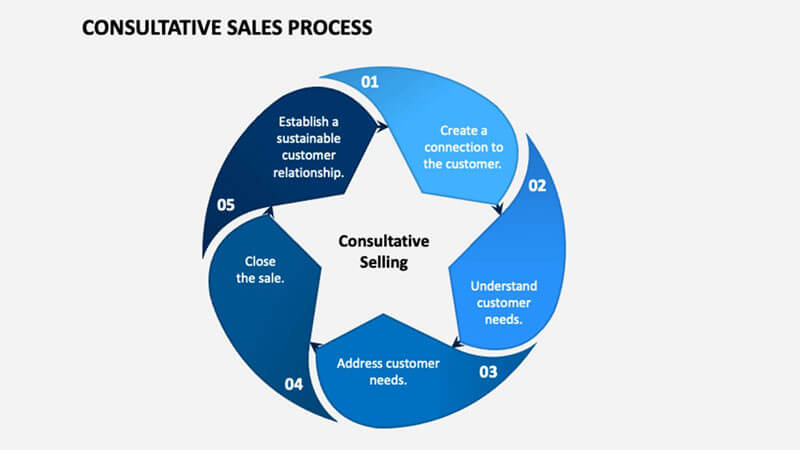
Rather than just trying to sell a product or service, focus on understanding the CIO's specific needs and pain points and offering solutions that address them. This involves becoming a trusted advisor and working with the CIO to find the best solutions for the organization. It is an effective strategy for selling to CIOs, as they are focused on driving innovation and improving operational efficiency within their organizations, and they need technology solutions that can help them achieve these goals. By taking a consultative approach, salespeople can demonstrate their understanding of the CIO's role and provide solutions that align with their specific needs and priorities.
2. Demonstrating the value of your offering

Demonstrating the value of your offering to CIOs is a crucial step in the sales process. CIOs are focused on driving innovation and improving operational efficiency within their organizations, and they need technology solutions that can help them achieve these goals. This can be done through use cases, white papers, and case studies. According to a recent report, 65% of CIOs report that they like to study case studies. As a result, by demonstrating the value of your offering in these ways, you can effectively communicate how your product or service will help the CIO achieve their goals and drive results for their organization.
Recent Marketing Articles
- Generate Business Sales Leads With These Tips
- B2B Sales Leads: The 7 Best Ways to Generate More Business Leads
- How ChatGPT Will Affect The Future Of SEO?
- How to Spend Your 2023 Marketing Budget: 5 Ways to Succeed This Year
- 10 Must-Know Tips for Marketing Your Law Firm In 2023
- How Buying B2B Data Helps To Close More Deals?
- 10 Tools That Actually Close More Deals
- How To Find Someone's Email Address: 5 Simple Ways
- Everything You Need To Know About Lead Management
- How To Buy Leads? Complete Guide On What To Avoid
- How To Take Your Email Campaign To The Next Level?
- Top 5 Intent Data Providers To Increase Your Sales
3. Use predictive analytics
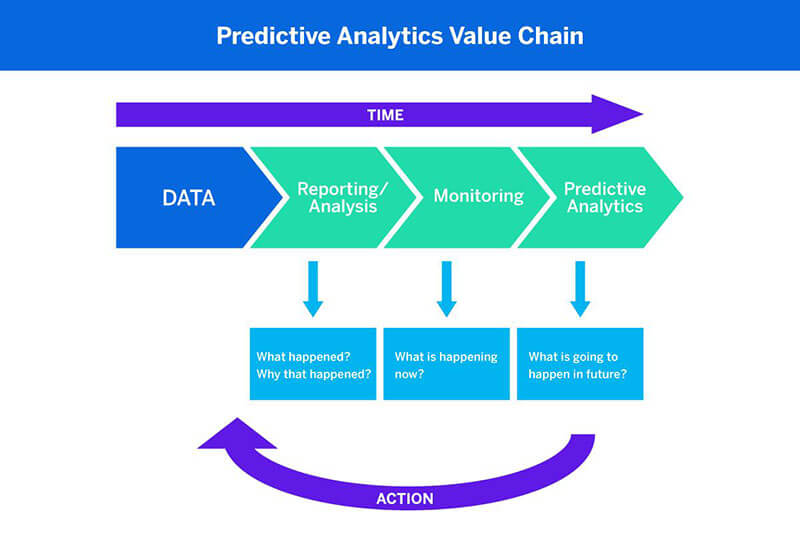
Source: Qualtrics
Don't skimp on the early planning. Predictive analytics efforts must be well-planned, have well-developed predictive models, and have a flexible organizational culture to be effective. Predictive analytics is more important than ever for salespeople to reach suitable targets at the right time. You can find patterns and forecast future outcomes with significantly better precision and "predictability" if you can extract crucial information from existing data sources. Use predictive analytics to present buyers with personalized, targeted information. Examine whether you're giving appropriate stuff to your audience based on their behavior.
Job Title Specific Email List
Send a message to our sales team below
4. Using Data and Case Studies
Using data and case studies in marketing to CIOs is important because CIOs rely on data and evidence to make decisions. Data and case studies provide concrete evidence of the effectiveness of your product or service and can aid in building trust and credibility with CIOs. It can also provide insight into the specific needs of different industries and use cases, which can be used to tailor your message to specific target audiences. In summary, using data and case studies in marketing to CIOs can be an effective way to demonstrate the value of your offering, build trust and credibility, and address concerns. It can also help to demonstrate the financial value of your offering and tailor your message to specific target audiences. It is a powerful tool for effectively communicating the value of your solutions to the CIOs.
5. Positioning Yourself as a Thought Leader
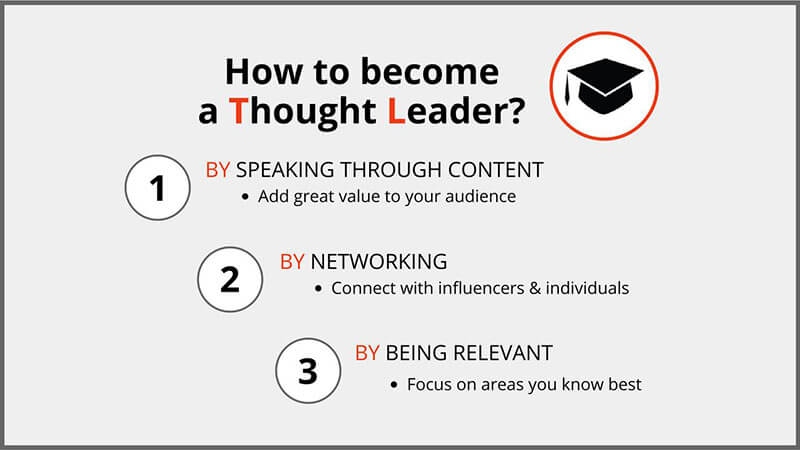
Source: EMCAB
Positioning yourself as a thought leader is an effective strategy for marketing to CIOs because it helps to establish credibility, build trust and set yourself apart from the competition. CIOs are always looking for ways to stay ahead of the curve, and positioning yourself as a thought leader can demonstrate how your expertise and insights can help them do that. To position yourself as a thought leader, Share your expertise, Speak at industry events, Network with other thought leaders, and may also use social media.
6. Know your CIO industry
You should be able to speak to the CIO's and his company's specific demands, as well as those of the industry as a whole. Knowing industry trends, vocabulary, and current challenges informs your prospect that you understand their goals and environment. Gain credibility by recognizing current trends and citing movers and shakers, as well as industry reports and analyses.
7. Shift the discussion away from tools and technology and toward strategy
As you fully understand the prospect's organization, you will be able to distinguish between needs and desires - nice and new toys vs products that can improve business performance and market value. Assist the CIO in thinking about business alignment and goals. Be responsible: If AI plays a role in your solution, that's fantastic, but restrain your inclination to focus on the technology rather than specific use cases and scenarios. Don't forget to mention any limits or challenges that a customer may have. Let's face it: no enterprise software is actually simple to install, configure, and optimize.
8. Use data to acquire a better understanding of the client environment
A McKinsey study from 2018 summarizes the need for a data-driven approach to selling: "B2B sales have transformed from an art to a science... sales are data-driven, enabled by digital tools, supported by advanced analytics, and focused on truly knowing the customer's 'what, why, and when.'"
With that being said, begin by learning about the customer's marketplace, such as competitive challenges and business demands. What are the regulatory and compliance requirements? What is the workplace culture, and how do they prefer to conduct business? Also, carry out an in-depth technology discovery process, mapping out all of the organization's applications, tools, networks, and services, such as cloud providers. With this, Salespeople can begin talks on the customer's environment and objectives.
9. Leveraging your network
CIOs make purchasing decisions based on their network, so use your own network of contacts to acquire introductions and create partnerships. Ask to be introduced by someone who knows the CIO. If the person making the introduction is a respected colleague or business acquaintance, you will have a better chance of success. If the individual is a personal friend of the CIO outside of work, the introduction will be more questionable, but it may still work out.
10. Solve, Don't Sell
Last but not the least- Solve, Don’t Sell. 91% of CIOs say their jobs are becoming more difficult. Every technology sale requires five doors to be opened in order to proceed: necessity, money, urgency, desire, and trust. When all of these doors are open, you can begin to be truly successful. The key to success implies that you are not selling a product but rather fixing a problem. Once you've recognized the requirement, concentrate on improving the organization and making the CIO's life easier.
Industry-Specific Email Lists
Send a message to our sales team below
Wrap-Up
When selling IT investments to the C-suite, it's all about the big picture. Concentrate on developing novel ways and alerting prospects about impending possibilities and risks. Be a thought leader, offer new sorts of innovation to CIOs, and help them stay competitive and ahead of the industry and technical trends. Instead of viewing CIOs as profiteers, focus on building a relationship with them so that they can open the door for you.
